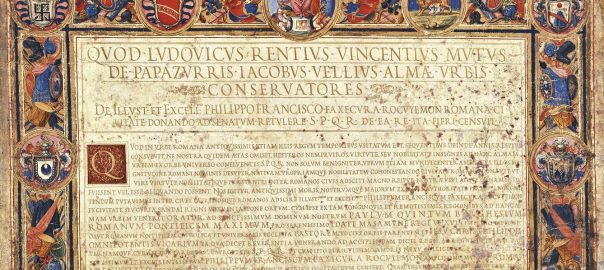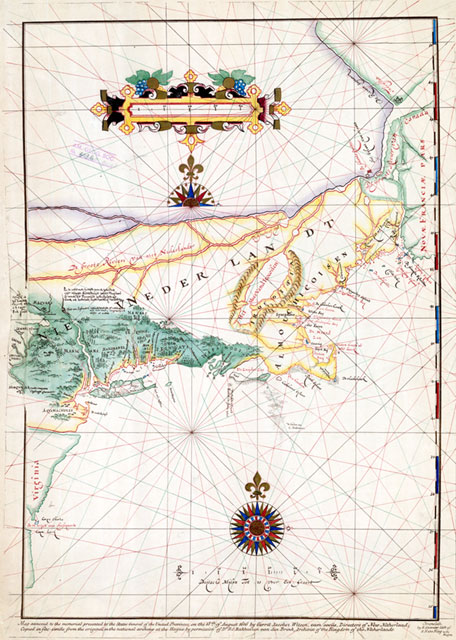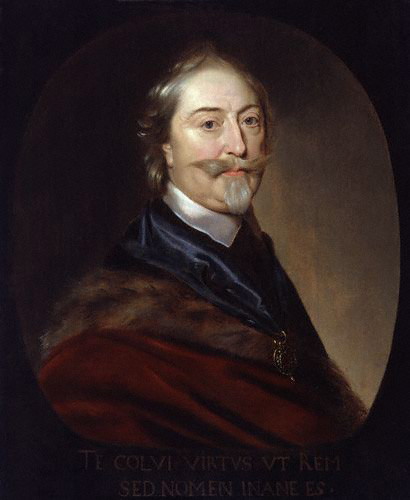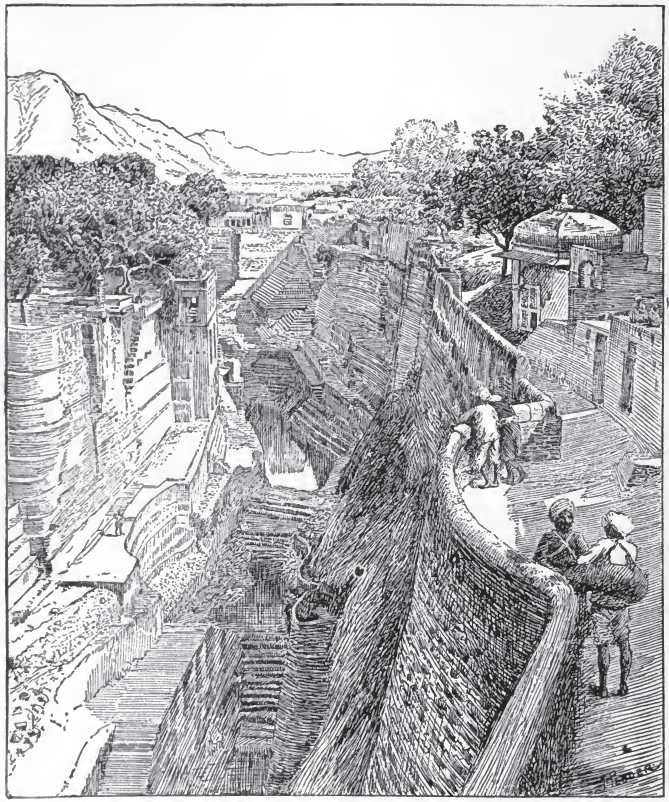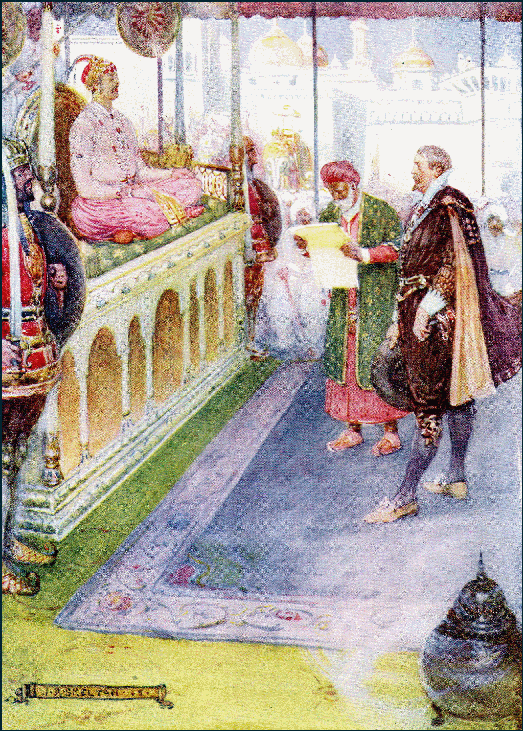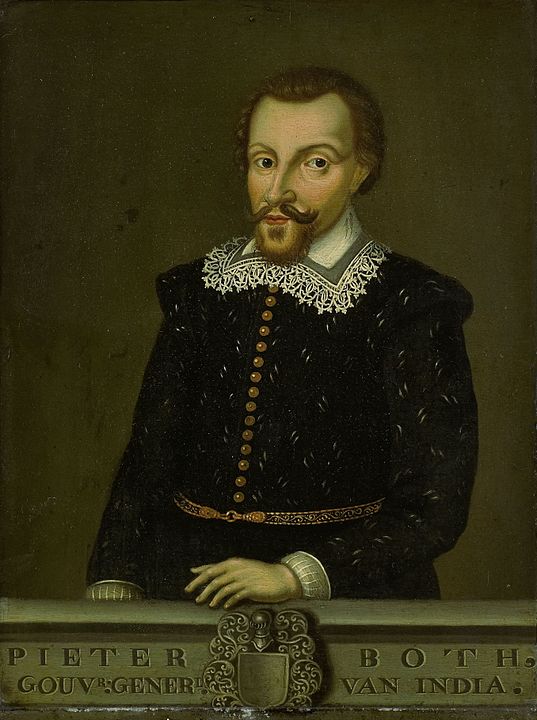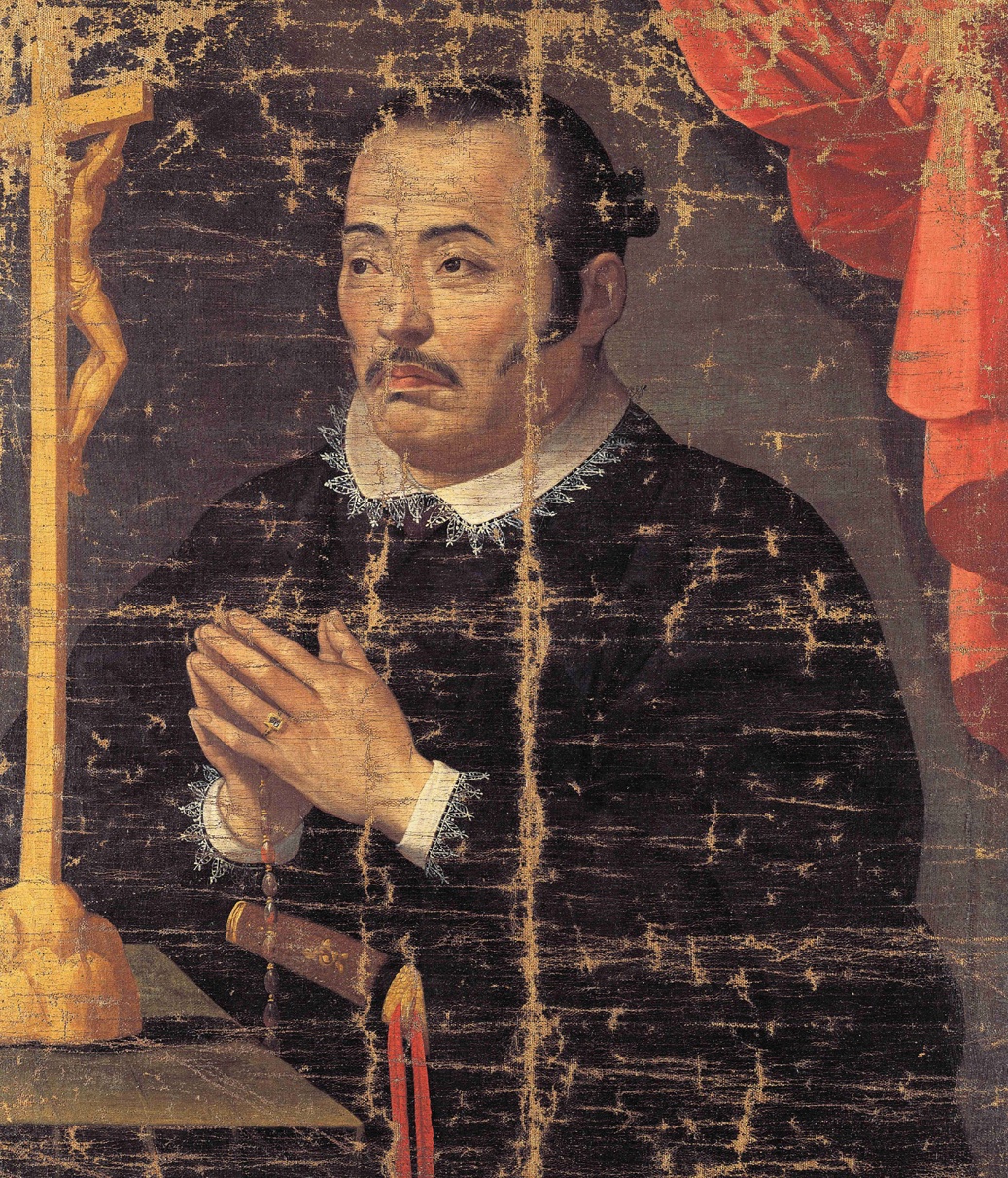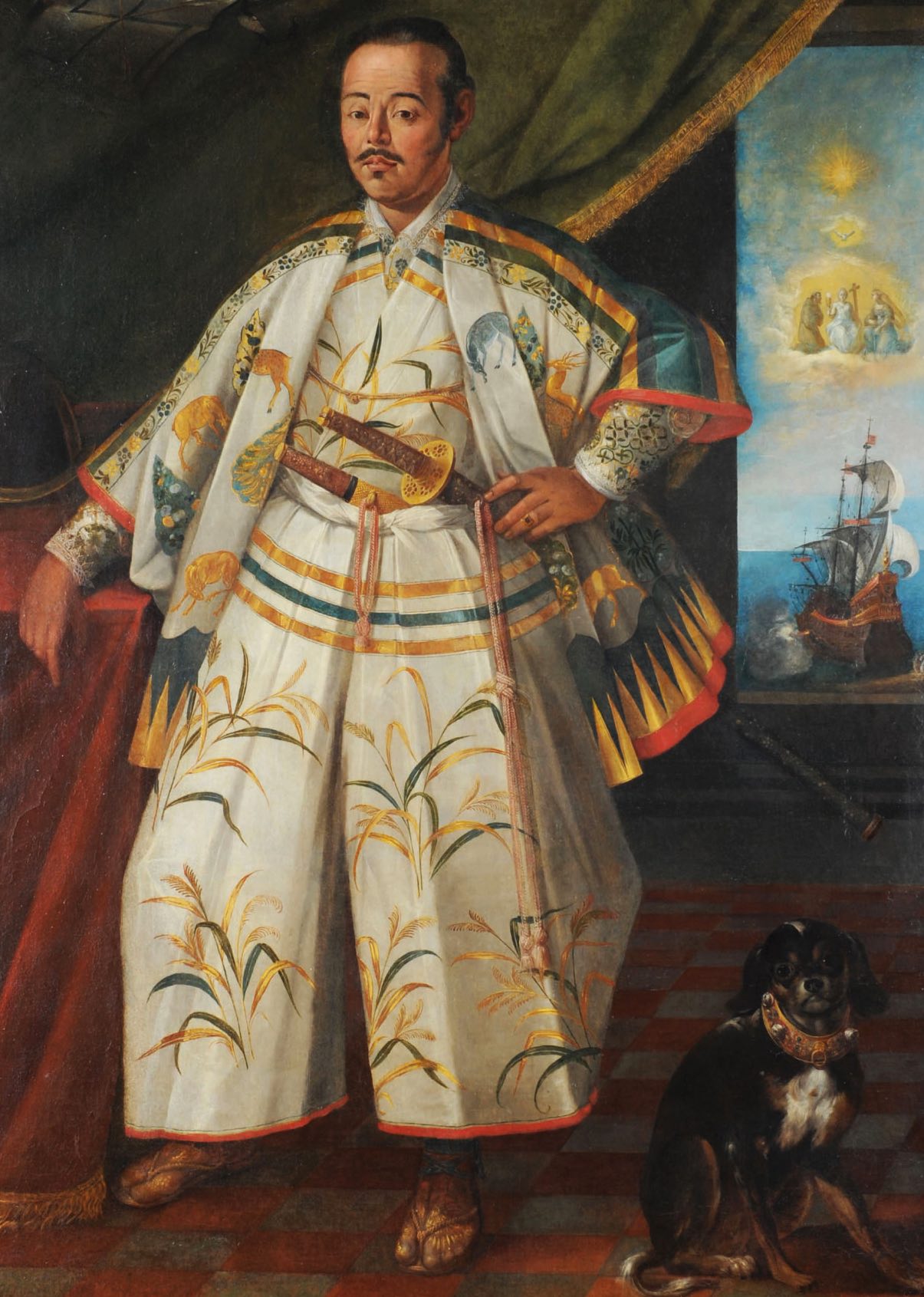In 1615 CE, the major trend in world history for the coming few decades was clearly turning out to be the arrival of the two new Protestant imperial powers, England and Netherlands, onto the world scene, including both the challenges they posed to the older Catholic empire(s)– Spanish and Portuguese, still joined as one– and the rivalry the English and Dutch empires pursued against each other in various places around the world. (Unlike the Spanish and Portuguese with the pope-sponsored Treaty of Tordesillas that divided the world up between their two empires in 1494, England and Netherlands had no figure of papal authority to adjudicate their often fiercely competing imperial claims.)
In today’s post we’ll look at the successful challenge the English continued to mount to Portugal’s position in Surat; at the continuing English-Dutch rivalry over the East Indies; and at a fascinating ambassador of the Japanese daimyo who had an audience with the pope, in Rome, in 1615.
First, though, a couple of quick but illuminating side-eddies in world history:
- In 1615, the States-General of the Netherlands granted a 3-year monopoly charter to a new company of adventurers/investors called the New Netherland Company (NNC), to conduct trade and settlement in mainland North America “between the 40th and 45th parallels.” The charter wasn’t renewed in 1618 because the business community in Amsterdam was planning the creation of the Dutch West India Company (GWC), which happened in 1621. After that, the GWC took over administration of all Dutch imperial projects on the western shore of the Atlantic and Dutch involvement in the trans-Atlantic trade in enslaved persons.
- In 1615, England’s King James I granted a monopoly charter to a new body called the Somers Isles Company to settle and run Bermuda. The charter continued until 1684, when the English Crown took over the colony directly.
It’s worth noting that the “monopolies” mentioned in these charters were only nationwide: in other words, all English traders or colonists who wanted to deal with Bermuda had to do so as part of the Somers Isles Company, or all Dutch traders or colonists who wanted to do business in North America had to do so through the NNC. At one point King James, who was also King James VI of Scotland, tried to make a bit of extra money for himself by giving a parallel license to investors from Scotland to compete against the English traders someplace. But the London investment community soon stopped him doing that! This is, by the way, another way in which in which we can see that imperial/colonial ventures helped to form the identity of the “nation-states” in whose name they were organized.
England vs. Portugal in Surat, India (again)
In 1612, a small English fleet had beaten a larger Portuguese fleet at Swally, near Surat in northwest India. Now, three years later, in February 1615, a small English fleet under another captain did the same again. This time, as in 1612, the local Mughal governor– who was, I think, the son of Mughal Emperor Jahangir, who would go on to succeed him some years later– also watched the progress of the sea battle with great interest. And this time, too, the victorious English fleet almost immediately sailed away to another point further east, as noted in the 1907 volume The European Struggle for Indian Supremacy in the Seventeenth Century, by William Wilson Hunter, hereafter “WWH” (p.53).
But one big difference in 1615 was that this year, the East India Company had already persuaded King James that he should send a formal ambassador to negotiate a longer-lasting trade and (anti-Portuguese) cooperation agreement with Emperor Jahangir. This ambassador was Thomas Roe, who reached Surat in September 1615 and then proceeded to the Moghul court, then convened at Amjir, where he stayed for three years, engaged in apparently tough negotiations with Emperor Jahangir.
Following is the account of Roe’s diplomatic mission that appears in WWH, pp. 197-202 passim:
Surat was the chief starting-place for Mecca, and the Portuguese squadrons had troubled the ocean path of pilgrimage. The Imperial Court, too happy that one infidel fleet should destroy another, granted to Sir Thomas Roe an “Order” for trade. These “Orders” were sometimes called “grants” or “licenses,” and sometimes dignified with the name of “treaties.” The truth is that as our power in India increased they gradually developed from mere permits into grants, then into treaties, and finally into de jure confirmations of conquests which we had de facto won. The treaty as drafted by Sir Thomas Roe would have allowed the English to found factories at all ports of the Moghul Empire, particularly in Gujarat, in Bengal, and in Sind; and exempted them from inland transit tolls, on payment of a fixed import duty of 3½ per cent. on goods and 2 per cent. on treasure. But these proposals, although they figure as “Roe’s Treaty” in Anglo-Indian histories, never passed beyond the draft stage and were rejected by the Imperial Court. Roe obtained, however, a permit for the English to reside at Surat and to travel freely into the interior, together with an order for the redress of the injuries inflicted on them by the local officials. He afterwards, in 1618, received a farman, or grant, in similar although somewhat handsomer terms, from the heir apparent, Prince Mirza Khurram, afterwards the Emperor Shah Jahan, then “fifteenth Viceroy of Gujarat,” the province of which Surat was the chief port. The prince allowed the English to hire, although not to buy or build, a house for their trade at Surat, and promised the assistance of boats in case they were attacked by the Portuguese. Sir Thomas Roe lingered long enough among the Moghul grandees to find that he was by no means regarded as the ambassador of an equal sovereign. But his presence at the Imperial Court, and the heir apparent’s viceroyalty of Gujarat, gave prestige to the English at Surat…
[A] halcyon period opened to the English at Surat. The crop-fields of Gujarat, with their miracle of two harvests a year, seemed a paradise to the storm-tossed mariners, as they rowed up the smooth channels of the Tapti. “Often of two adjoining fields,” they wrote, “one was as green as a fine meadow, and the other waving yellow like gold and ready to be cut down.” They might regret that spices did not grow so far north, but they found substitutes in the fine cotton fabrics and dyes of upper India. Small English agencies, which were thrown out into the interior (in Gujarat, Ahmadabad, Kathiawar – especially the Kathiawar coast of the Gulf of Cambay – and Sind), collected the muslins of the neighbouring provinces, and the indigo of Agra, for shipment at Surat.
England vs. Netherlands in East Indies
The following account of the tensions building up between the English and Dutch in the East Indies is from Chapter 3 of WWH.
As a pro-empire English historian of his era, WWH was often fairly effusive in his admiration of the Dutch (and disparaging of the “degeneracy” of the Portuguese.) In Ch. 3 of his book, he remarked on the efficiency and effectiveness of the Dutch VOC’s expeditions in the East Indies. He was particularly laudatory of Pieter Both, who was the first “governor-general of the Dutch East Indies”, and also the VOC’s chief executive in that region. This, from pp.78-82, provides WWH’s view of what was happening between the two Protestant powers in the East Indies:
[Both] sailed as governor-general with a fleet of eight ships in January, 1610, and after months of storm arrived at Bantam in January, 1611. During the next four years he brought the islands within a network of treaties. He thus confirmed from Java to the Moluccas the supremacy and exclusive trade of the Dutch; procured, when expedient, the toleration of the Protestant religion; and laid the foundations of a new national power in the Eastern Archipelago. On the expiration of his office, he sailed in January, 1615, with four richly laden vessels for Europe, but perished in a hurricane off the Mauritius…
He had found his task an easy one. The native rulers in the Archipelago, like the coast rajas with whom the Portuguese dealt on the Malabar seaboard, were princes on a small scale… Nor as regards the English did the first Dutch governor-general find much difficulty. The whole number of English ships sent out up to the year 1610, inclusive, amounted to seventeen, and of the seventeen vessels only a few were at any one time in Asiatic waters. The Dutch, on the other hand, had sent out sixty-five ships before the union of the separate companies in 1602, and sixty-nine vessels from 1602 to 1610. The armament and fighting force of the English ships were also inferior to the Dutch. The Dutch, moreover, took a practical care for the well-being and morals of their servants that was unknown in the English factories. While the London Company sent out volumes of sermons and forced back the first English wife, the Dutch governor-general carried with him thirty-six goodly young women as mates to their countrymen in the East. [!] It was not till more than half a century later that the English Company, moved by the scandal of a half-caste population, followed their example.
The English factors and captains in the Archipelago were in truth outmatched at every point, and the London Company found itself compelled to seek support nearer home. In 1611 it opened negotiations at Amsterdam. A letter of Robert Middleton to the burgomasters of that city proposed “that as our nations have long continued in firm bonds and league of amity, so we might peaceably proceed to trade jointly together without troubling of either states.” The Dutch replied in an amicable spirit, and proposed to approach the States-General on the subject. But meanwhile the London merchants realized that the struggle was a national one, not to be settled by the two Companies alone, and had declared to the Lord High Treasurer of England that they “are enforced at last to break silence and complain their griefs”….
From this period the relations of the Dutch and English Companies divide into two distinct branches: continuous negotiation in Europe, and continuous contests in the East. After preliminary action by our ambassador in Holland, the States-General, in 1613, sent commissioners accompanied by [Hugo] Grotius, then pensionary of Rotterdam and the foremost international jurist of the age, to treat with English commissioners in London. Much wrangling resulted in a vague agreement in 1614 that each nation should enjoy such places as it had conquered or discovered, and pay customs duties to the other at those ports, while both should join against the common enemy – Spain and Portugal. The governor of the English Company held a conference with the Dutch ambassador in London for “a loving and friendly trade both defensive and offensive,” by the two corporations: we to throw open the Cambay coast to the Dutch, and they to admit us to the Spice Islands.
The growing animosities in the East rendered this arrangement a dead-letter, and in January, 1615, negotiations were renewed at The Hague…
A Japanese ambassador in Rome (and France and Spain)
In 1615, an emissary of the the daimyō (ruler) of Sendai, Japan– or more realistically, an emissary of the powerful shogun Tokugawa Ieyasu– called Hasekura Rokuemon Tsunenaga had a meeting with Pope Paul V.
Hasekura had left Japan in 1613 and traveled across the Pacific to present-day Mexico, across Mexico, then across the Atlantic to Europe, where he also visited France and Spain. He went back home by a similarly arduous route, that also involved a short stay in the Philippines, arriving back in Japan in 1620.
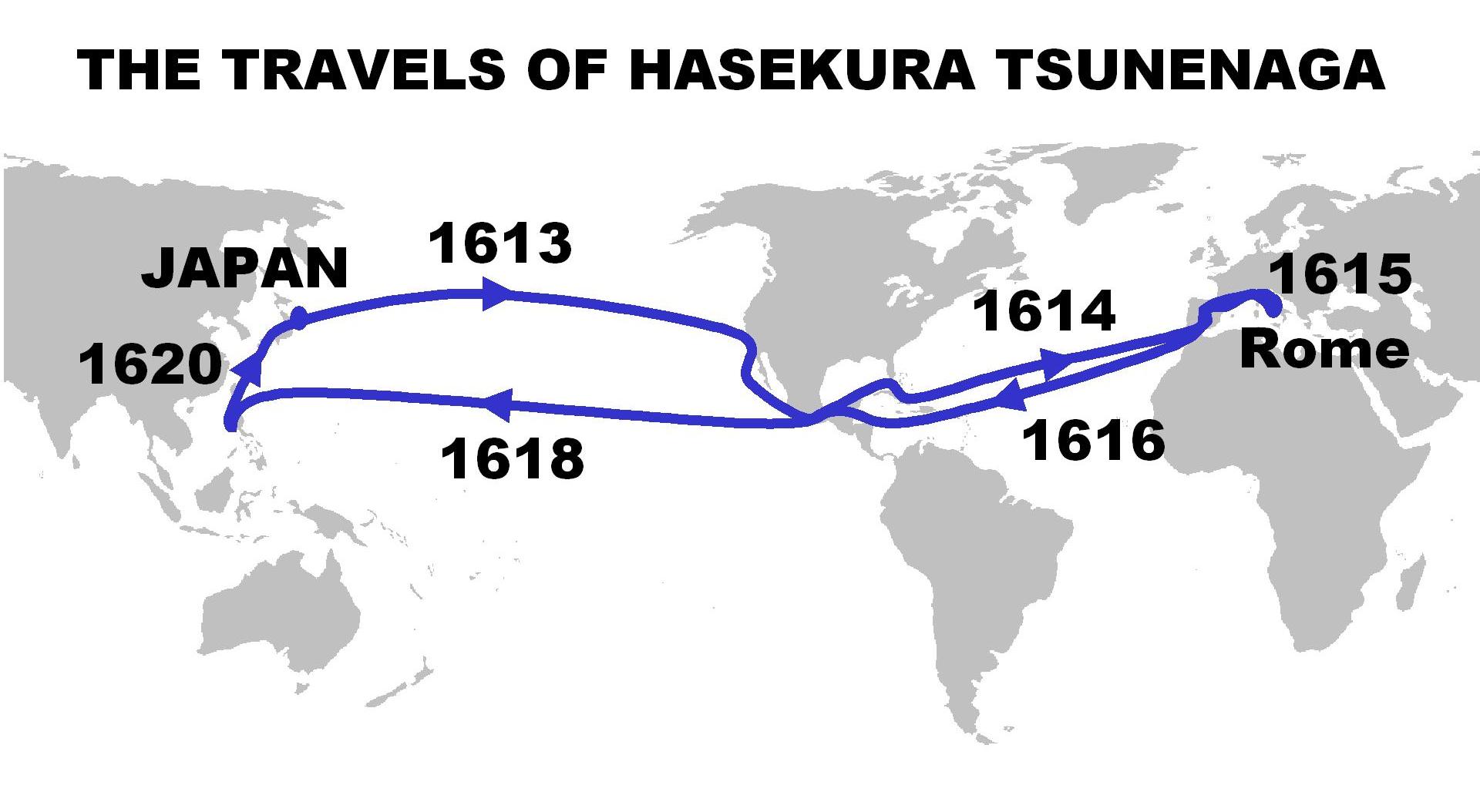
It seems clear that when Hasekura left Japan, Tokugawa was pretty interested in exploring better relations with the Spanish and their allies in the papacy and in France. And the Spanish, who by now had a well-developed position in the Philippines, just a little south of Japan, were evidently eager to explore better relations with the powers-that-be there.
However, in the seven years that Hasekura was away from Japan, the politics there changed quite a lot. In 1613, Tokugawa Ieyasu was already 70 years old. He was already starting to hand over power to his son Tokugawa Hidetada, and he died in 1616. The new shogun was noticeably less open to foreign trade and foreign contacts than his dad had been. Indeed, he inaugurated a 230-year period of Japan’s closure to the outside world that would only be broken when Captain Perry arrived in the mid-19th century…
Also, there was some talk in Edo that the small community of Japanese whom the Portuguese/Jesuits had succeeded in converting to Catholicism around Nagasaki had been involved in the Osaka-based movement whose big challenge to the Tokugawas had been beaten back in 1614…
Things did not look good for Ambassador Hasekura when he got back to Edo…
However, his departure in 1613 must have been a hopeful time. The daimyō of Sendai personally oversaw the construction for Hasekura’s mission of a complete Spanish-style galleon. English-WP tells us that the ship, “took 45 days to build, with the participation of technical experts from the Bakufu [the shogunate]… 800 shipwrights, 700 smiths, and 3,000 carpenters” and cites a Japanese source as recording that, “The Great Ship left Toshima-Tsukinoura for the Southern Barbarians on 15 September Japanese calendar.”
Many details of Hasekura’s travels, as presented on the English-WP page, are really fascinating. He had to leave his Japanese ship in care of the Spanish authorities on Mexico’s Pacific shore, in Acapulco. He and his companions (who included some Japanese and some Spanish, including a Franciscan friar called Luis Sotelo) then traveled across Mexico and across the Atlantic all under care of the Spanish.
Hasekura met with Spain’s King Philip III in Madrid on January 30, 1615: “Hasekura remitted to the King a letter from [the daimyō of Sendai] Date Masamune, as well as an offer for a treaty. The King responded that he would do what he could to accommodate these requests.”
Then this:
Hasekura was baptized on 17 February by the royal chaplain Diego de Guzmán in the Convent of Las Descalzas Reales, and renamed Felipe Francisco Hasekura in honor of the king… The Duke of Lerma – the main administrator of Phillip III’s rule and the de facto ruler of Spain – was designated as Hasekura’s godfather.
He and his party went to France, where the locals marveled at, among other things, the fact that, “They never touch food with their fingers, but instead use two small sticks that they hold with three fingers.”
They arrived in Rome in September in early November:
Hasekura remitted to the Pope two gilded letters, one in Japanese and one in Latin, containing a request for a trade treaty between Japan and Mexico and the dispatch of Christian missionaries to Japan. These letters are still visible in the Vatican archives… The Pope agreed to the dispatch of missionaries, but left the decision for trade to the King of Spain.
Anyway, he had lots more adventures and arrived back in Japan (via the Philippines!) in 1620. We learn this:
Hasekura reported his travels to Date Masamune [the daimyō] upon his arrival in Sendai. It is recorded that he remitted a portrait of Pope Paul V, a portrait of himself in prayer (shown above), and a set of Ceylonese and Indonesian daggers acquired in the Philippines, all preserved today in the Sendai City Museum.
The daimyō seemed to have been nonplussed, recording in his family annals that:
“Rokuemon [Hasekura] went to the country of the Southern Barbarians, he paid his respects to the king Paolo, he stayed there for several years, and now he sailed back from Luzon. He brought paintings of the king of the Southern Barbarians, and a painting of himself, which he remitted. Many of his descriptions of the Southern Barbarian countries, and the meaning of Rokuemon’s declarations were surprising and extraordinary.”
The daimyō‘s next actions were speedy:
“Two days after the return of Rokuemon to Sendai, a three-point edict against the Christian was promulgated: first, that all Christians were ordered to abandon their faith, in accordance with the rule of the shōgun, and for those who did not, they would be exiled if they were nobles, and killed if they were citizens, peasants or servants. Second, that a reward would be given for the denunciation of hidden Christians. Third that propagators of the Christian faith should leave the Sendai fief, or else, abandon their religion”.
Interestingly, English-WP also notes this:
The very existence of the travels of Hasekura was forgotten in Japan until the reopening of the country after the Sakoku policy of isolation. In 1873, a Japanese embassy to Europe (the Iwakura mission) headed by Iwakura Tomomi heard for the first time of the travels of Hasekura when shown documents during their visit to Venice in Italy.
By the way, the banner at the very top of this bulletin is a portion of a proclamation issued in Rome naming Hasekura an honorary citizen of the city.
